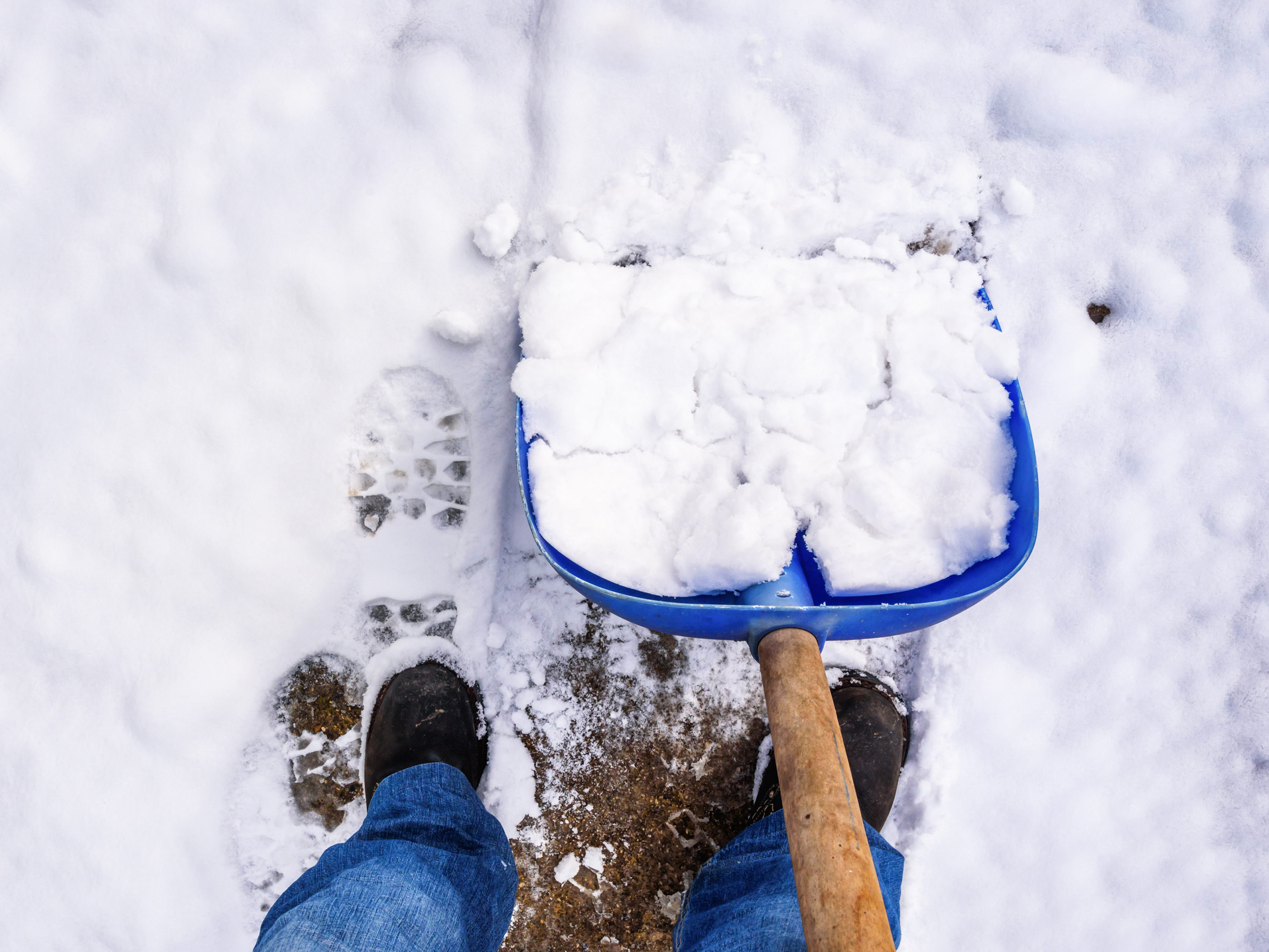Get Easy Health Digest™ in your inbox and don’t miss a thing when you subscribe today. Plus, get the free bonus report, Mother Nature’s Tips, Tricks and Remedies for Cholesterol, Blood Pressure & Blood Sugar as my way of saying welcome to the community!
Why snow shoveling can spell a heart attack even if you’re healthy

Is weekend housework your only exercise for the week? Then you’ll want to read on and read carefully.
It’s winter, and in most parts of the country, that’s meant a decent amount of snow so far – enough to warrant getting the shovel out. And that’s what I want to talk to you about.
Snow shoveling can be a great muscle stretcher and calorie burner. But if you go from no exercise at all, to shoveling your driveway, you’re asking for trouble. Possibly fatal trouble.
So, what’s so dangerous about snow shoveling?
Shoveling snow places great demands on your cardiovascular system, as high, in fact, as a cardiac stress test on a treadmill or bicycle, which often can exceed 80 to 90 percent of your maximum exercise tolerance.
Shoveling involves mostly arm work, which increases blood pressure dramatically. When this happens, the demands on your heart also increase.
And, while all this arm work is going on, your legs are doing isometric exercise. They are holding your feet in place to steady you, rather than flexing or bending a joint, as in running.
This type of exercise can raise blood pressure even more than things like walking or jogging. Combined with the tension in your upper body as you grip that shovel tightly, you’re really elevating blood pressure.
When was the last time you warmed up your muscles before a round of snow shoveling? Have you ever? If you’re like most of us, you just put on your coat and boots and head out there.
This adds to the danger of shoveling snow. Without a proper warmup, your muscles are more likely to be injured, and your heart rate elevates suddenly, placing more strain on your blood vessels.
Finally, by definition, snow shoveling takes place in the cold. Inhaling cold air may cause your blood vessels to constrict, including the coronary arteries.
Your body may have a stress reaction to extreme cold, causing it to release substances that “not only increase the work of the heart but make blood stickier and more likely to clot,” according to Dr. Andrew Sterner, a Georgetown University neurologist.
This is, quite simply, a stroke waiting to happen. In fact, when blood banks store platelets, the cells that make blood clot, they store them at room temperature, since refrigerating them would activate a clot that would render the donated blood useless.
How to protect your heart while shoveling snow
Winter is already known as “heart attack season.” Add snow shoveling to the way your blood changes in cold weather, and you can see why extra protection for your heart is needed during the cold months.
Eating a diet of heart-healthy foods, minimizing stress, and staying hydrated are important first steps (and yes, dehydration is more of a danger in winter than in warm weather!).
But in order to protect yourself from a snow-shoveling heart attack, first, determine if you belong to one of these high-risk groups:
- You’ve had a prior heart attack
- You have known heart disease
- You have high blood pressure or high cholesterol
- You are a smoker
- You lead a sedentary lifestyle
Even if you are not among the above groups, there are precautions you need to take before launching into the snow-shoveling season (these tips from MetroHealth Heart and Vascular Center in Cleveland):
Before you shovel snow:
- Talk to your doctor before you shovel snow.
- Avoid shoveling immediately after you awaken as most heart attacks occur early in the morning when blood is more prone to clotting. Wait for at least 30 minutes and warm up.
- Do not eat a heavy meal before shoveling: blood gets diverted from the heart to the stomach.
- Warm up your muscles before starting by walking for a few minutes or marching in place.
- Do not drink coffee or smoke for at least one hour before or one hour after shoveling or during breaks. These are stimulants and elevate your blood pressure and heart rate.
While shoveling:
- Use a small shovel: shovel many small loads instead of fewer heavy ones.
- Begin slowly and take frequent, 15-minute breaks.
- Drink plenty of water to avoid dehydration.
- Dress in layers, to avoid hypothermia (low body temperature) or overheating.
- Cover your head and neck (50% body heat lost through head and neck).
- Cover your mouth (breathing cold air can cause angina or trigger breathing problems).
- Watch for warning signs of a heart attack, including lightheadedness, dizziness, being short of breath, or if you have tightness or burning in chest, neck, arms or back. If you think you are having a heart attack, call 911.
Editor’s note: There are perfectly safe and natural ways to decrease your risk of blood clots including the 25-cent vitamin, the nutrient that acts as a natural blood thinner and the powerful herb that helps clear plaque. To discover these and other secrets of long-lived hearts, click here for Hushed Up Natural Heart Cures and Common Misconceptions of Popular Heart Treatments!
Sources:
- How to Shovel Snow Without Hurting Yourself — Time
- Don’t let snow shoveling give you a heart attack — Popular Science
- Can shoveling snow put your heart at risk? — Harvard Health Publishing
- Extreme cold and hot weather linked to increased stroke risk, blood clots, study suggests — National Post
- Winter Heart Health — The MetroHealth System
- Heart and Vascular Center — The MetroHealth System














